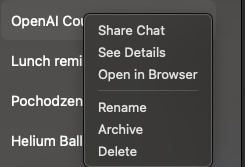
Aker BP ASA and Hoegh Evi have received an approval in principle from classification and advisory firm DNV AS for a next-generation carbon dioxide (CO2) carrier designed to transport captured industrial emissions in Europe to sequestration sites in Norwegian waters.
“While initially sized to handle up to 10 million tonnes of CO2 per annum, it may be scaled to accommodate growing market demand”, Hoegh Evi, formerly Hoegh LNG, said in an online statement. The vessel is being developed in Norway with Saipem SpA subsidiary Moss Maritime a.s.
Aker BP operates two licenses to explore potential CO2 injection sites on the Nordic country’s continental shelf: EXL 005 Poseidon and EXL 011 Atlas.
“DNV’s Approval in Principle includes a comprehensive assessment of the vessel’s design, including its onboard CO2 conditioning module. It is the first to be reviewed under DNV’s new CO2 RECOND class notation, developed specifically for CO2 handling and conditioning”, Hoegh Evi said.
Ørjan Jentoft, Aker BP asset manager for carbon capture and storage, commented, “We are excited to leverage Aker BP’s extensive upstream expertise to mature and develop CO2 storage solutions on the Norwegian Continental Shelf”.
“This innovative design with designation from DNV is expected to set new benchmarks in safe, cost-efficient, and sustainable large-scale CO2 transportation and storage”, Jentoft added.
Earlier this month INEOS Group named and launched what it said was the first Europe-built CO2 carrier for capture and storage.
Adapted for handling CO2 under pressure and at low temperatures, Carbon Destroyer 1 was built at the Royal Niestern Sander shipyard in the Netherlands to serve the Denmark-based Project Greensand. The vessel used the EasyMax design developed by Dutch shipping majors Royal Wagenborg and Royal Niestern Sander.
The Project Greensand partners – diversified British company INEOS, London-based Harbour Energy PLC and Danish national oil and gas company Nordsøfonden – expect the ship and the other CCS components to become fully operational by the end of 2025 or early 2026. Project Greensand aims to store 400,000 metric tons per annum of CO2, with plans to ramp up to as much as eight million metric tons annually by 2030.
“The launch of Carbon Destroyer 1 is an important next step for Carbon Capture and Storage in Europe. We are demonstrating that Carbon Storage is commercially viable and a far better way to decarbonize Europe without its deindustrialization”, INEOS chair Jim Ratcliffe said in a joint statement by the Project Greensand partners and the shipbuilders May 14.
Project Greensand is the first of its kind to demonstrate that captured CO2 can be transported cross-border and stored offshore, according to INEOS. It had its demonstration March 2023 when it injected CO2 transported from Belgium into the Nini field on Denmark’s side of the North Sea.
To contact the author, email [email protected]
What do you think? We’d love to hear from you, join the conversation on the
Rigzone Energy Network.
The Rigzone Energy Network is a new social experience created for you and all energy professionals to Speak Up about our industry, share knowledge, connect with peers and industry insiders and engage in a professional community that will empower your career in energy.
MORE FROM THIS AUTHOR





















